Photosensitive device works with light.
When light hits the voltage or current changes.
It can turn ON or OFF lamp, alarm or control system.
They are used in auto lamp, sensors and safety circuits.
Photocell:
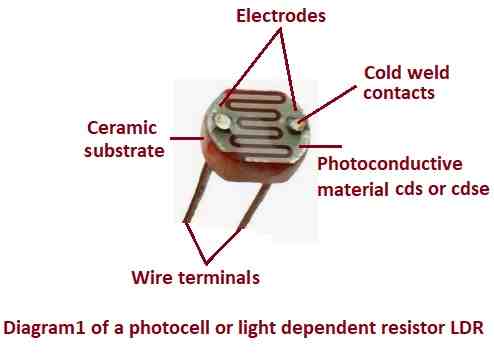
Light material is placed in zigzag between two metal contacts on ceramic base.
Zigzag gives is more contact area.
Material is mostly CdS or CdSe.
Thickness and width change resistance and performance.
All parts are inside metal or dark plastic case with clear window.
Diagram 2 shows symbol of photocell.
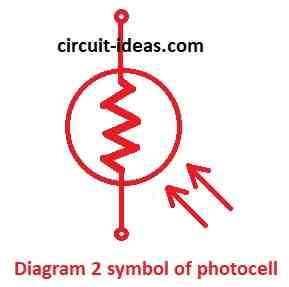
Photocell Light Switches:
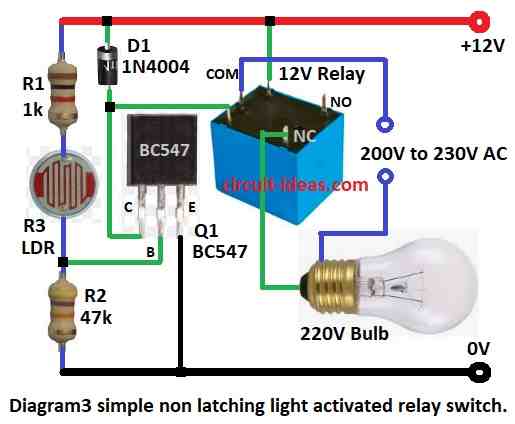
Diagram 3 to 8 show light switch circuit with photocell and relay.
Diagram 3 is of simple type.
It is used in dark place like cabinet.
Photocell R1 with resistor R2 make voltage divider for base of transistor Q1.
In dark the R1 has high resistance.
There is no base voltage so Q1 is OFF.
Relay also OFF.
In light the R1 has low resistance.
Base gets voltage so Q1 is ON.
Relay also is ON, which can control other circuit.
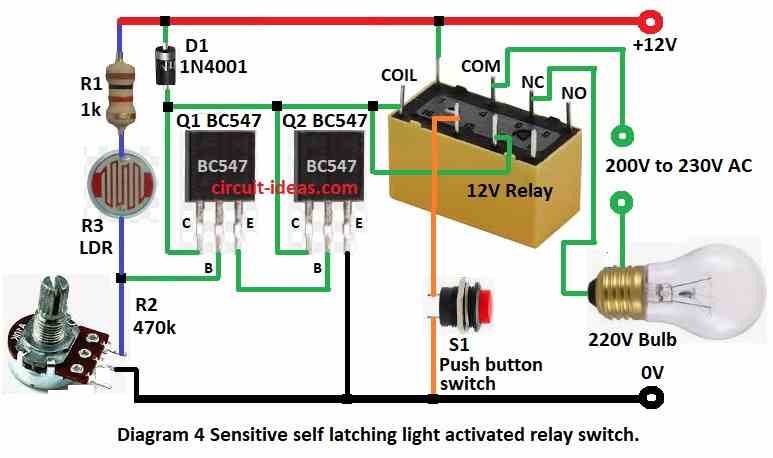
Diagram 3 has simple sensitivity.
Diagram 4 is more sensitive.
Two transistors Q1 and Q2 are in Darlington pair.
Potentiometer R2 to adjust better.
It can also lock itself ON using with extra relay contact.
Pushbutton S1 (NC) reset the circuit.
Diagram 5 shows how photocell work in this circuit.
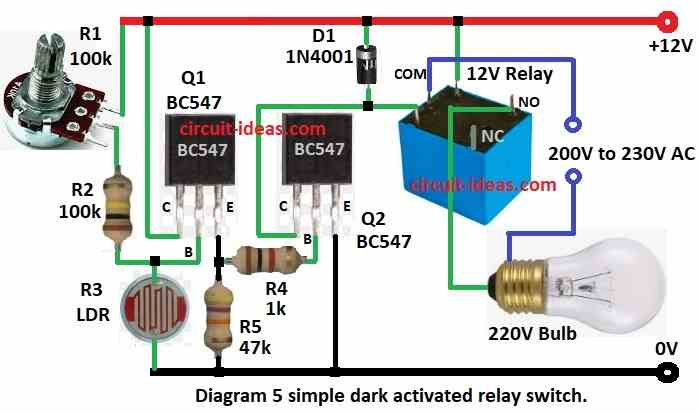
R2 and photocell R3 make voltage divider.
When light is low the voltage at R2–R3 point goes high.
This voltage goes to Q1 emitter follower.
Then it goes through R4 to Q2 amplifier.
Q2 drives the relay.
In diagram 4 and 5 the light trigger can change if voltage or heat changes.
Diagram 6 is more stable.
It works same even if voltage or heat changes.
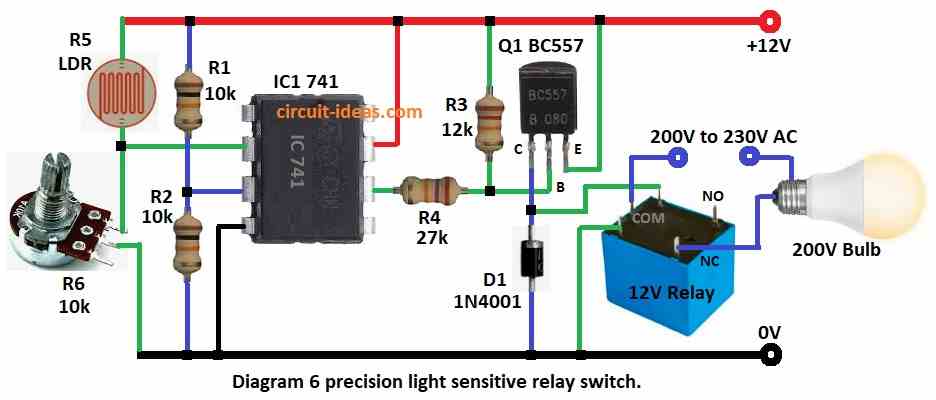
In this circuit R5 photocell, R6 potentiometer, R1 and R2 make Wheatstone bridge.
IC1 op-amp with Q1 transistor and relay work as sensitive switch.
They check balance of bridge.
Bridge is stable.
It does not change by voltage or heat.
It only changes when light changes value of parts.
Diagram 7:
Add small hysteresis to stop relay from fast ON/OFF near trigger point.
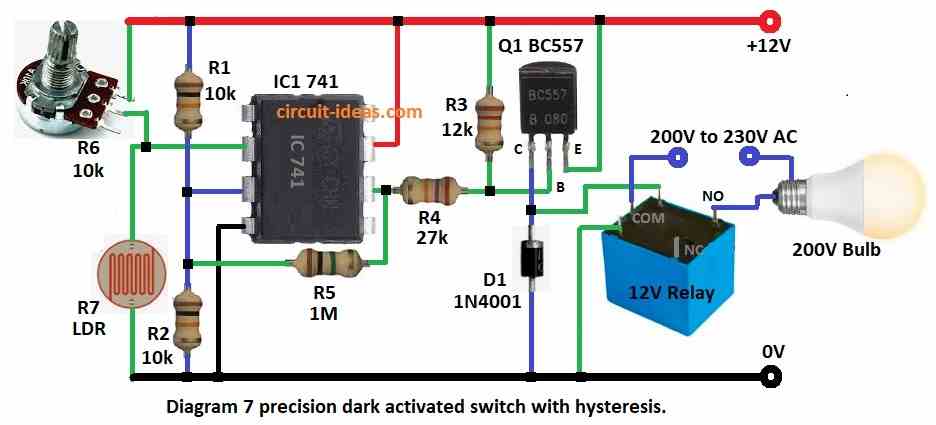
Relay turns ON when light is low but stays ON until light much brighter.
This gap is called hysteresis.
Bigger R5 means more hysteresis.
No R5 then no hysteresis.
Diagram 8 uses two op-amps for precise light and dark control.
Relay ON when light above one level or below other level.
R1 set dark level.
R3 set bright level.

In diagram 6 and 8 circuits the potentiometer value should be same as photocell resistance in normal light.
This makes circuit work better when relay turns OFF.
Photodiodes:
Photodiodes are light sensors.
They work by photoelectric effect.
When light falls they make small electric signal.
They are made from silicon (Si), germanium (Ge) or gallium arsenide (GaAs).
They have PN junction.
When light hits the electrons move.
And then electron hole pairs form.
Electric field separates them.
This makes photocurrent matching the light level.
Like solar cells they also make voltage in light.
But in circuits they are used in reverse bias.
This gives faster and more sensitive response.
Sensitivity depends on light wavelength.
It is linked to material bandgap.
They are reliable and efficient.
And are used in many light detection systems.
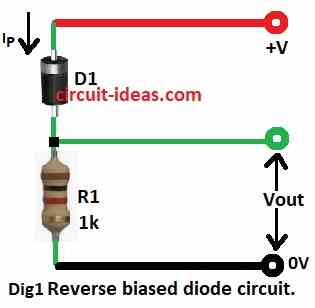
In reverse bias a normal silicon diode see diagram 1 only has tiny leakage current.
So no voltage appears across resistor R1.
If we remove the case and expose the PN junction then we can put it back in circuit and it reacts to light.
When light hits diode current goes higher to about 1 mA.
Then voltage appears across R1.
All silicon PN junctions can sense light.
A photodiode is just normal diode with clear cover so light can enter.
Diagram 2 shows symbol of photodiode.
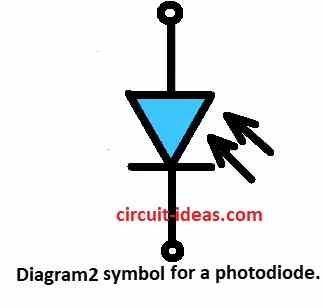
In Diagram 3 photodiode is in reverse bias.
Output voltage is measured across load resistor R1 which is in series with the photodiode.
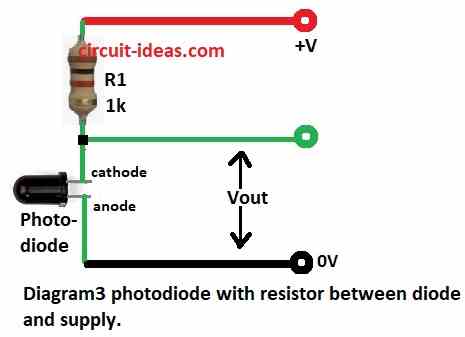
This resistor can also connect between diode and ground same as in diagram 1.
Photodiodes respond to different light wavelengths.
Response depends on material used in semiconductor.
Diagram 4 shows normal response curve for silicon light sensors.
It includes both photodiodes and phototransistors.
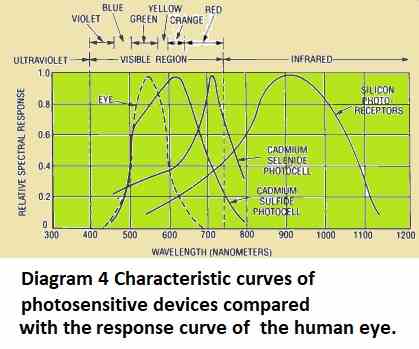
Silicon photodiodes are less sensitive to visible light than CdS or CdSe photocells.
But they react much faster to light changes.
CdS and CdSe photocells are good for visible light.
They have slow response and can connect directly.
Photodiodes are better for infrared (IR).
They give fast response and can handle AC signal.
It is used in IR remotes, beam break switches and alarms.
PbS (lead sulfide) photocells work same as visible light types.
But they respond only in infrared range.
Phototransistors:
Phototransistor is special part that senses light and makes stronger signal.
It works like mix of photodiode and transistor.
When light hits the small current is made.
This current is amplified.
So it can detect very tiny light changes.
It is normal BJT or FET changed to react to light.
Usually it has 2 pins collector and emitter or 3 pins collector, emitter and base.
Base area is made open to catch light.
Light photons make charges inside and current flows.
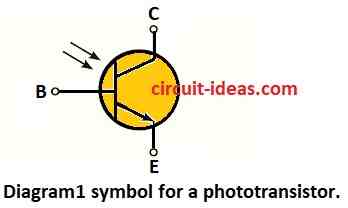
Diagram 1 shows phototransistor symbol.
It is silicon NPN transistor with clear case so light reach PN junction.
Usually base pin is not used and is left open like in diagram 2.

Diagram 2A shows base, collector junction in reverse bias.
It works same as photodiode.
When light falls current forms in base, collector area.
This current goes into base.
It is amplified and comes out as collector current.
Resistor R1 changes this current into output voltage.
Collector and emitter current are almost the same.
Base is left open with no feedback.
Diagram 2B works same as 2A.
Here output voltage is across R1 from emitter to ground.
Phototransistors are about 100 times more sensitive than photodiodes.
But they are slower up to few hundred kHz.
Photodiodes are faster and can work up to tens of MHz.
We can change phototransistor into photodiode by wiring as in diagram 3.
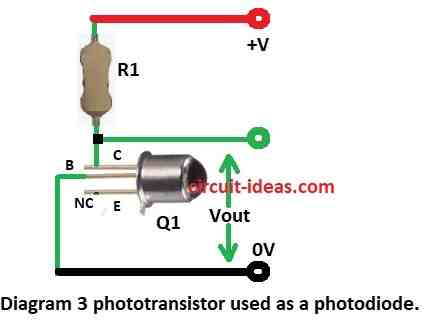
Another way to say it:
We can change sensitivity and speed of phototransistor by using potentiometer.
Connect potentiometer between base and emitter as in diagram 4.
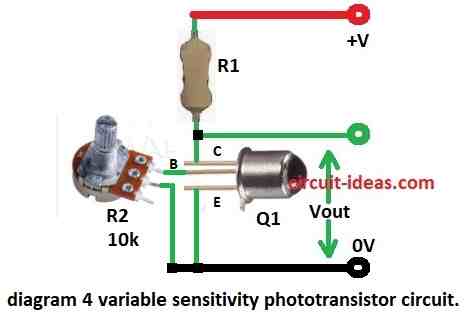
If R2 is not connected then phototransistor works normal.
If R2 is connected then it works more like photodiode.
In real use diagram 2 to 4 resistor R1 is chosen for balance.
Higher R1 gives more voltage gain but lower bandwidth.
R1 must keep photosensor in linear range.
Darlington phototransistor uses two transistors together.
See diagram 5.
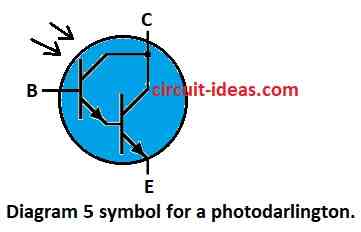
Darlington phototransistors are about 10× more sensitive than normal type.
But they are much slower.
They work only up to tens of kHz.
Conclusion:
This project for Understanding Photosensitive Devices Circuits is easy to learn.
Photosensitive devices work with light.
Circuit changes output when light increase or decrease.
It is useful in making automatic lights, alarms and sensors.
Leave a Reply